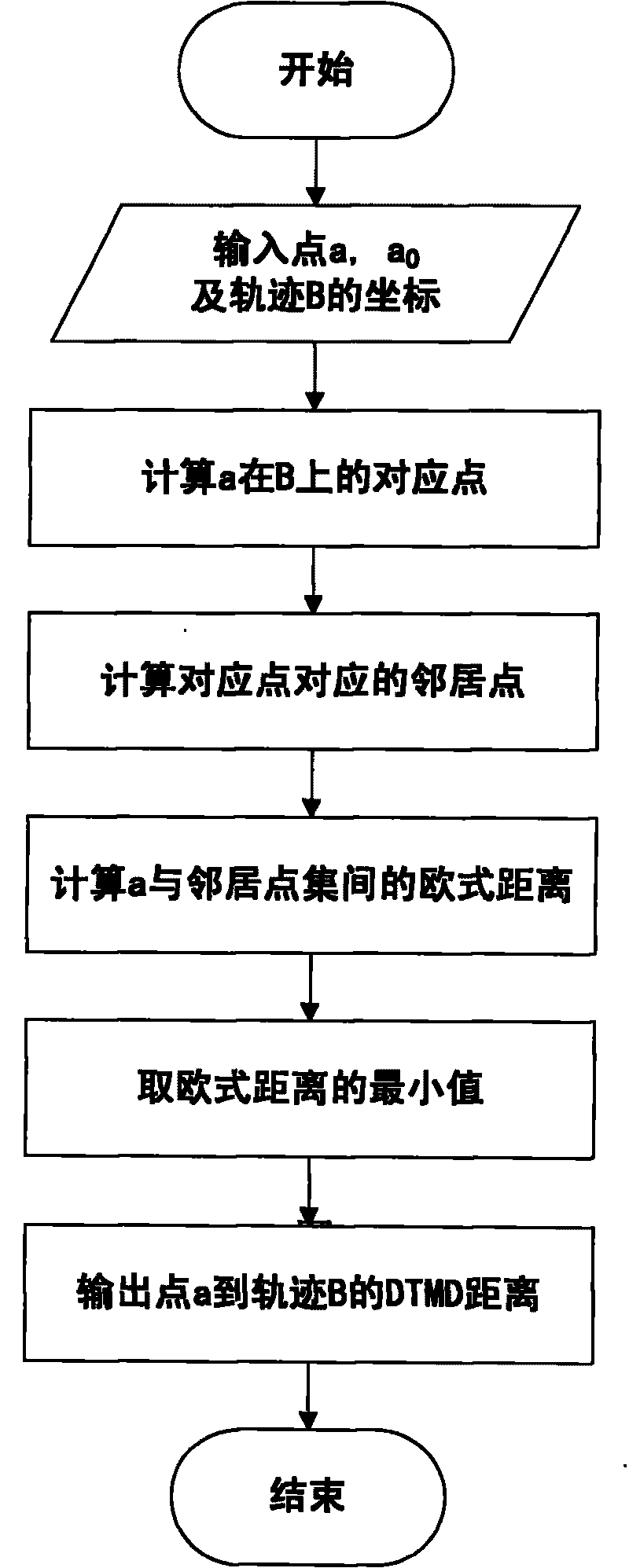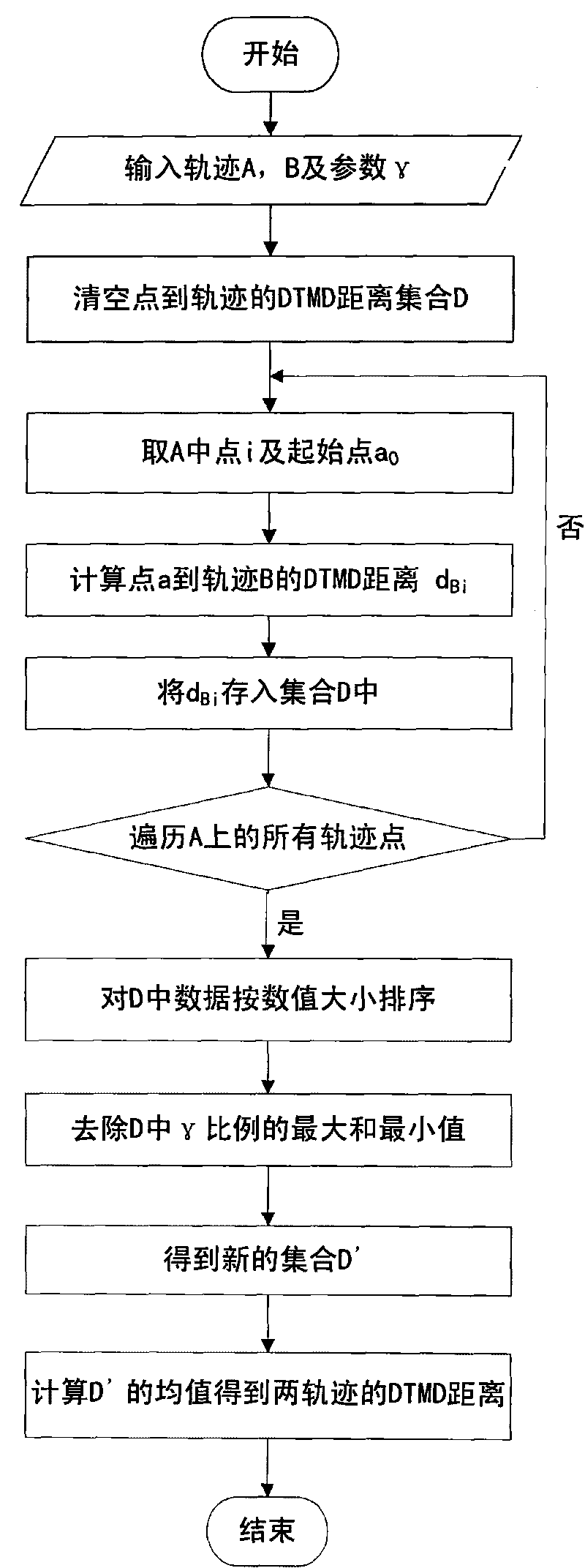Method of trajectory clustering based on directional trimmed mean distance
A trajectory clustering and trajectory technology, applied in instruments, character and pattern recognition, computer components, etc., can solve problems such as lack of adaptability, difficulty in threshold parameters, sensitivity to noise and occlusion, and achieve high real-time performance and processing speed , improve computing efficiency, and reduce the amount of calculation
- Summary
- Abstract
- Description
- Claims
- Application Information
AI Technical Summary
Problems solved by technology
Method used
Image
Examples
Embodiment Construction
[0046] The following is a further description of the method proposed in this paper in combination with the process of vehicle identification and clustering:
[0047] The present invention is based on the trajectory clustering method of DTMD, such as figure 1 As shown, it specifically includes the following steps:
[0048] Step 1, use motion tracking methods such as MeanShift, Kalman, AdaBoost, etc. to track the trajectory, and extract the coordinates of the trajectory.
[0049] Step 2, trajectory preprocessing
[0050]1) Trajectory length filtering, first count the number N of coordinate points on each trajectory, and set a trajectory length threshold T1. If N≥T1, keep the track and record the subscript of its corresponding track, otherwise discard the track, so as to filter out a part of the tracking process that does not track the complete track.
[0051] 2) Variance filtering, on the basis of valid trajectory length, calculate the variance V of the abscissa of all points...
PUM
 Login to View More
Login to View More Abstract
Description
Claims
Application Information
 Login to View More
Login to View More - R&D
- Intellectual Property
- Life Sciences
- Materials
- Tech Scout
- Unparalleled Data Quality
- Higher Quality Content
- 60% Fewer Hallucinations
Browse by: Latest US Patents, China's latest patents, Technical Efficacy Thesaurus, Application Domain, Technology Topic, Popular Technical Reports.
© 2025 PatSnap. All rights reserved.Legal|Privacy policy|Modern Slavery Act Transparency Statement|Sitemap|About US| Contact US: help@patsnap.com



